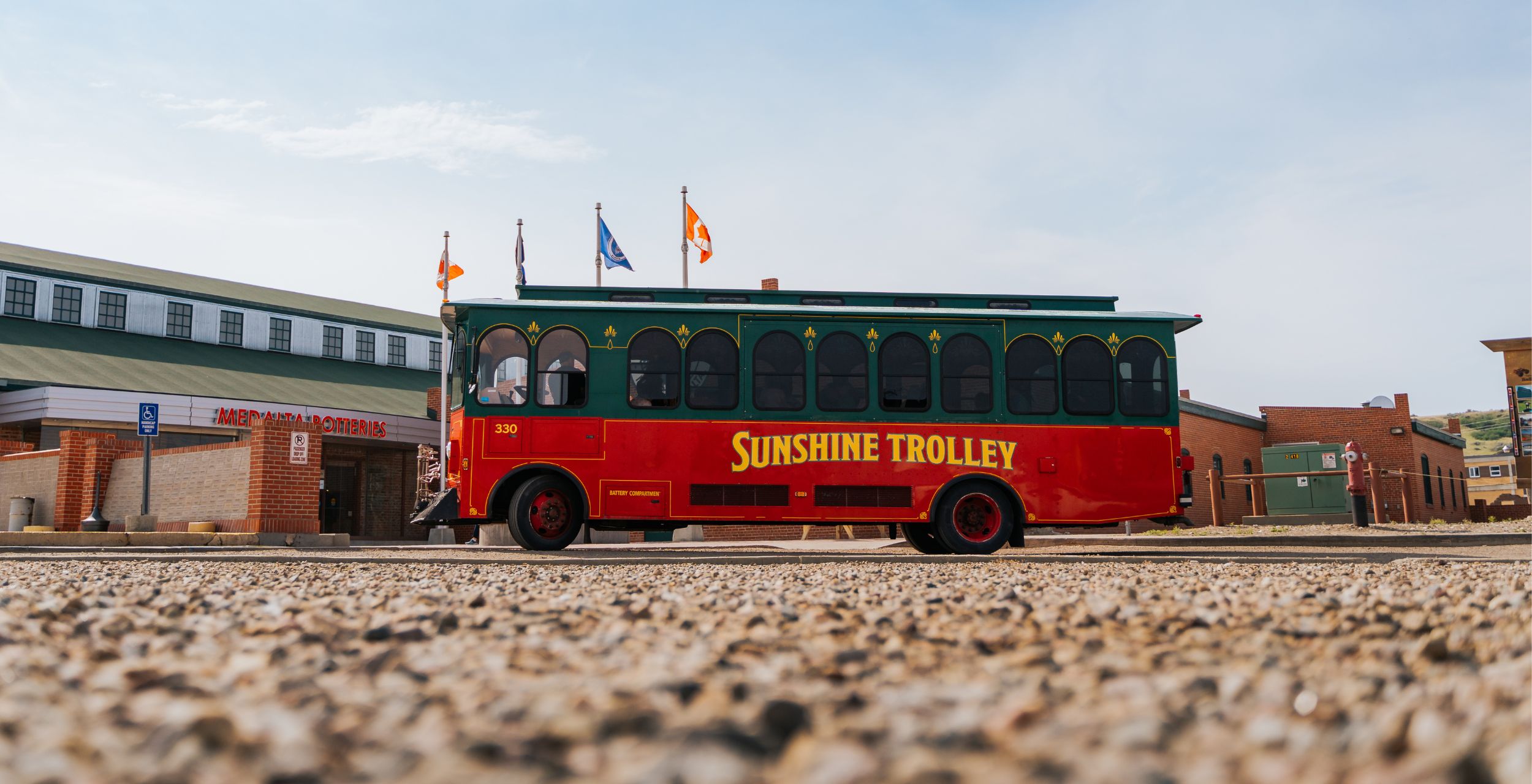Explore Medicine Hat’s Indigenous history with this self-guided tour, made by The Miywasin Friendship Centre and partners.
Police Point Park
Police Point Park offered sheltered camping with an abundance of firewood available for First Nations, and it was a safe crossing place for the South Saskatchewan River. The chokecherry bushes and buffalo berries were harvested by First Nations for many years. During winter, an ice-free section of the river was referred to as a breathing hole for the water spirits, and the distinctive cottonwood trees had ceremonial uses. Anecdotal sources said Police Point Park was also used historically as a location for tree burials.
The Old Man Buffalo Stone, made by stone sculpture artist Stewart Steinhauer, was inspired by the Manitou Stone. This two-sided sculpture was crafted to be a guardian watching over the buffalo herds.
Explore the area: Police Point Park has an abundance of paved trails that bring beautiful views of the cliffs and South Saskatchewan River. Visit the Nature Centre to learn more about Indigenous history, the ecosystem, and wildlife in the park.
Saamis Archaeological Site
Located in the valley of Seven Persons Creek, this area was once used as a late winter, early spring buffalo meat processing site by early First Nations. The site dates back thousands of years, and archaeologists believe there are over 83 million artifacts buried in the valley. Visitors are reminded that no digging for artifacts is permitted at the Provincial Historic Site.
Explore the area: Follow the paved trail to stroll the natural area, and then head towards the Saamis Tepee — the World’s Tallest Tepee — to see the site from a bird’s eye view.
Saratoga Park
This space was a Métis community until the mid-2000s. It was designated a Historic Designation in 2020, and a plaque was unveiled in 2021 that shares more information about the space and photos.
Explore the area: Follow the paved trail to the plaque and where the Métis community was once located. Continue on to see cliff-side views. You can also paddle Seven Persons Creek that runs through the park. Find page xx for more details.
Strathcona Island Park
Located along the South Saskatchewan River, Strathcona Island Park was home to First Nations and Métis. The remains of some Métis homesteads are on the south side of the spray park and camp kitchen, although obscured now by time and foliage.
Explore the area: Strathcona Island Park also features a waterpark, playground, boat launch, paved trails, and picnic areas.
Riverside Veterans’ Memorial Park Indigenous Military Service
Thousands of Indigenous peoples have served in the Canadian Military, including all of the conflicts presented on Medicine Hat’s Cenotaph.
In some cases many members of the same family went overseas to serve, sacrificing much. Four Bliss brothers; Pat, Joe, Bill, and Tassie, served in the trenches of the First World War. Tassie was injured, having his forearm amputated, and Bill struggled in his return to civilian life. Bill enlisted in 1915 at the age of 19 with the third CMR. Bill was wounded at Ypres in 1916 by shell in the trenches. He contracted influenza in 1917 and was discharged in 1919 at the age of 23.
Explore the area: This park is located in Medicine Hat’s Historic Downtown. Nearby is the Miywasin Friendship Centre, where gatherings are often hosted to the public like drum circles and bannock & tea.


.jpg)

